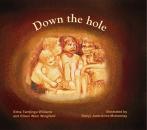 3752847905040220772.jpg
3752847905040220772.jpg
 Down the Hole, Up the Tree, Across the Sandhills : Running From the State and Daisy Bates
single work
children's
Down the Hole, Up the Tree, Across the Sandhills : Running From the State and Daisy Bates
single work
children's


